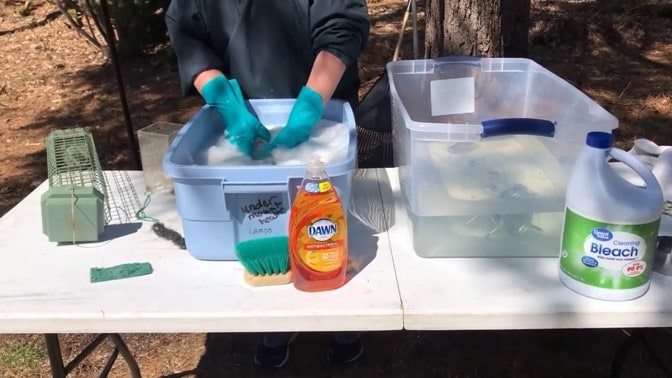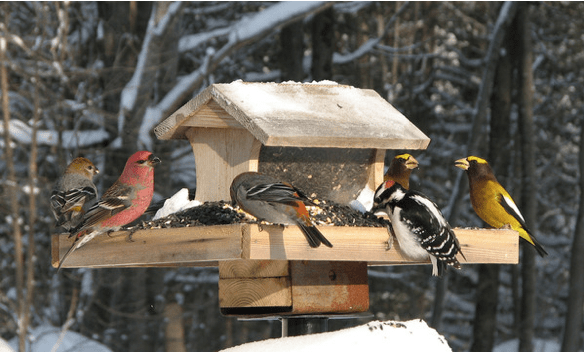Looking out at our feeders we see a variety of birds throughout the day – finches, jays, cardinals, chickadees – the list goes on. We have feeders because we know that the sources of foods that these birds eat run low as winter progresses and a feeder station is like an oasis in the middle of a desert in January, February, and March!
Our birds are happy, and we hope, healthy. As we consider the end of the winter season (okay – as I write this it’s snowing…hard!) we must also consider what to do with our feeding stations once we know that the birds can find their own sources of food.
First – clean those feeders! The feeders can carry disease like salmonella and mycoplasma which can harm or kill the birds! Scrub your feeders with soap and water, and we mean scrub. Do not do this where you wash your own dishes! Use a separate basin of warm water and soap, and please wear rubber gloves. Rinse the feeders thoroughly and then soak them in a mixture of one part bleach to nine parts water. This can help to kill off remaining contamination. Birders will tell you that you should do this every couple of months…even in winter.
Next, be sure to clean the space under your feeding station. All those old husks, rotting suet, and seeds can generate mould when wet, and mould can cause many issues for the birds, your pets, and you!
For more resources and helpful hints regarding birding, bird stations, or caring for your birds, be sure to visit Bird Friendly Peterborough in this region, or source your own Bird Friendly community near you.

